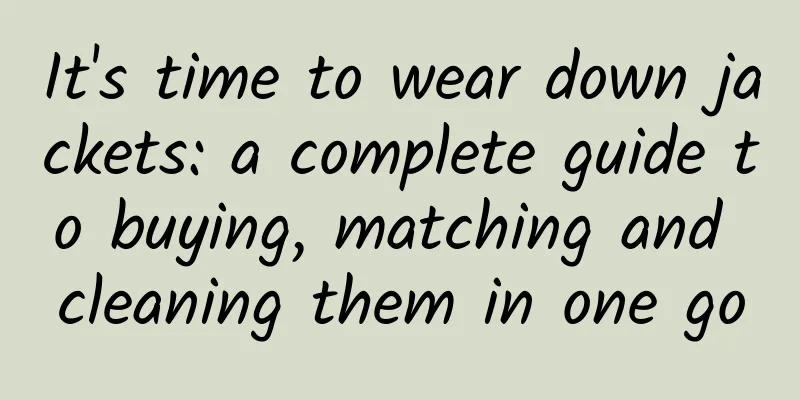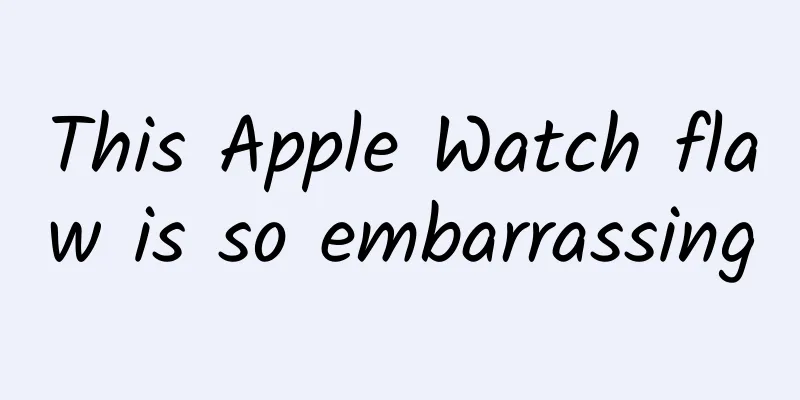Summary and trend analysis of the latest AppStore search algorithm!

|
According to the observed dates, the new search algorithm of Apple App Store has been launched since November 3, 2015*. In the following period, many ASO ers and developers found that their applications matched more keywords, ranging from dozens to hundreds. Even if there are no keywords set in the app title and app keyword column, they can still be matched and searched. Apple's App Store search algorithm has become smarter, search results have become more relevant, and the results have expanded a lot. This was a major improvement and refinement made by Apple at the end of 2015, which enabled keyword search based on contextual scenarios. Brother Ying believes this is just the beginning. If Apple used to pay more attention to the rankings of Top charts and Category/Genre charts, from this moment on Apple began to "care about what users want to search for" and try to "guess what users search for." After the new algorithm was launched, the application had many exposure opportunities under many keywords. This brings ASOers and developers the opportunity to increase downloads, which is equivalent to adding a lot of "set keywords". According to Eagle Brother's observation and research, these extra keywords are related to the application's category, industry, competitors, manually set keyword similarity extensions, and user-related search expressions. More exposure opportunities are always good, but it also means that other apps are also showing the keywords where you originally had a competitive advantage. With this “in and out”, you will find that the downloads of most apps have not changed much. But opportunities are opportunities. For ASOers and developers who are good at seizing opportunities, it does bring an increase in downloads. The difference lies in that those who are "foresighted" have discovered, adapted to and optimized new opportunity keywords, while those who are "unaware" have neither seen the opportunities nor taken any action. Earlier, it was observed that around mid-July 2015, Apple's algorithm had another local optimization. Keyword stuffing is severely cracked down and demoted, especially keyword stuffing in titles. Many ASOers and developers try their best to take advantage of the length limit of the title and pile up keywords. In my previous article on what you must know and do in ASO , I mentioned that "the title should be descriptive". When developers submit overly long titles, Apple will prompt "some problems may arise" and recommend that the title should not exceed 64 characters. I suggest that it should not exceed 54 characters, and it is best to be within 25 characters (inclusive). Remember that "the title is not just for the machine to see, but more importantly for the user to see." We must never sacrifice long-term interests in order to gain short-term benefits. Apple's App Store search algorithm in 2014 basically continued the algorithm in 2013, but with some improvements. An important change in Apple's algorithm in 2013 is to factor the ratings and number of reviews of apps into the rankings. Before this algorithm, the download volume and download increment speed were basically considered. I won’t say more about this, Brother Ying. The most difficult part of ranking any algorithm is how to effectively quantify and ensure fairness while preventing “hacking”. I believe many SEO ers know that due to over-optimization (Keywords stuffing/spamming), traditional web search engines have weakened the Metadata of keywords in web pages, or even completely rejected them. Even for external links, new algorithms are constantly being used to identify the "credibility" of external links. When the credibility of external links cannot be verified, the most appropriate way to deal with them is to "directly discard" them and not include them in the weight calculation. The same is true for the search algorithm of the Apple App Store . Whether it is the early improvements in algorithms from download volume to reviews to relevance, etc., they are all aimed at providing a more orderly and reasonable search result experience. That's not enough. Based on the evolution history of Apple’s algorithms, I believe that Apple’s search algorithms and systems will not undergo major fundamental changes in the future, but some indicators may be introduced to correct and adjust the rankings, such as: Regret rate. Typical examples include: un-installs vs. installs, bad ratings vs. total ratings; Utilization rate. A typical example is: bad usage rate vs. average usage rate (the same application, not the frequency comparison of different applications). Update rate. Typical examples include: active update rate (not the default forced upgrade); Complaint rate. Typical examples include: contextual analysis of complaint words in comments; Participation rate. Typical examples include: the proportion of users using the app’s services (regardless of whether the experience is good or bad); Quality rate. Typical examples include: user comment quality, user ID quality; Correlation rate. A typical example is: an ID misses the first download and goes to download another one? What's going on? Selection rate. A typical example is: I see you, but don’t click on you; I click on you, but don’t download it. What's going on? Why are there the above speculations? It all starts with relevance. At the same time, Apple should evolve towards a system like Google's PageRank. For example, the app search index outside the app store, app dissemination and social sharing, media coverage , including the inclusion of the manual app selection classification system, and external links (pointing to the iTunes app id details page) will all become references for app rankings. We have one year to observe in 2016. Regardless of whether the above guess is correct or not, Brother Eagle will try to share the actual algorithm evolution with you as soon as possible. At this point, based on the Apple App Store search algorithm over the past few years, I would like to briefly summarize several key factors of Apple's search algorithm: Download base: Increasing the overall download volume and/or the download volume of a certain keyword is still important for the ranking of the list and the ranking of keywords; Download increment: also the download growth rate. Please don’t rush for a while and then take a break for a while (you know what I mean); Review score: Please ensure 4 points or above. Number of comments: Please continue to ensure that there are enough comments. Please reject junk comments and junk IDs. Relevance: Try to be as relevant to your industry and products as possible, and use accurate stems for manual keywords; Forward compatibility: reduce uninstall rate, increase activity, attract more comments and reviews from natural users with good products and services, invite your users to download each new version to experience it, and invite them to write new reviews (regardless of whether they have written them before); Fix bugs quickly: There are no pretentious users, only pretentious R&D. Once a bug occurs, please fix it quickly on the branch and submit it for release. Do not wait for the next version. Improve products and services: This is the best way; Widespread dissemination: Please manage a social network for dissemination. 1, 2, 3, and 4 above are all verified by their own mathematical relationship trends. I will not copy the pictures here as they are not very relevant. We are not engaged in model theory and do not need mathematical formulas to prove them. There will be no unchanging algorithm in the future, but there will also be no drastic changes in the algorithm. It is inevitable to add new factors to adjust the existing algorithm results. The only thing ASOers and developers need to do is to face the changes and make necessary adjustments to cater to the new algorithms. Finally, ASO cannot support the promotion and operation of a product. ASO is not a single-case hero. Only full-case operation and marketing can achieve the best ASO effect. In the next issue, I will share “Full-case Marketing: ASO is more exciting”. APP Top Promotion (www.opp2.com) is the top mobile APP promotion platform in China, focusing on mobile APP promotion operation methods, experience and skills, channel ASO optimization ranking, and sharing APP marketing information. Welcome to follow the official WeChat public account: appganhuo [Scan the top APP promotion WeChat QR code to get more dry goods and explosive materials] |
<<: Increase followers, promotion, IP building, and Weibo operation skills!
>>: Kuaishou advertising landing page design tips!
Recommend
Valuation Modeling Skills Enhancement Course (Fifth Edition)
Resource introduction of Valuation Modeling Skill...
"Convergence·Food Safety Guide" series丨Are you doing the right thing to relieve pain? Tips for relieving pain at home
Generally speaking, pain is an uncomfortable feel...
21 user analysis models you must know for operations and promotion!
1. Redefine growth 01. Traditional Funnel Model T...
Amazing Oracle Bone Script丨Talking about Cicadas in Summer
Since ancient times, Chinese people have been acc...
What is so great about the Y-20?
Mixed Knowledge Specially designed to cure confus...
It is said that product and marketing experts all "understand human nature". How can you do that?
After working in the product and marketing fields...
China's paid video market is expected to exceed 200 billion
Yesterday we analyzed the monetization methods of...
Terrible! Improper drying of clothes may cause health problems? You must know these facts!
This article was reviewed by Li Jiangtao, Associa...
How much does it cost to join the Bozhou food delivery app? What is the price for joining Bozhou’s food delivery app?
How much does it cost to join a food delivery app...
Interpreting ASP.NET 5 & MVC6 Series (15): MvcOptions Configuration
Program model handling IApplicationModelConventio...
4 tips to improve product conversion rate
You may have heard that FOMO (Fear Of Missing Out...
Eight common misunderstandings among newcomers to TikTok, common questions among newcomers to TikTok!
1. Do I need to maintain an account to use Douyin...
The new Volkswagen Beetle is on sale for RMB 195,800 to RMB 274,600
We recently learned from Volkswagen that the new ...
Short video operation: VLOG "script" writing guide
“You just need to master the vlog method You can ...
How do I create a video ad? Video advertising production tips!
The whole process of video advertising material p...









